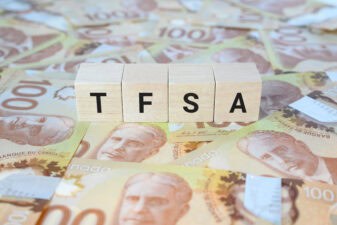The summer of 2020 witnessed a major stock market rally that sent equities to new heights. The NASDAQ and S&P 500 set several all-time highs, while Canadian markets recouped a significant percentage of their COVID-19 losses.
For many investors, these results were encouraging. The speed with which markets recovered from the second quarter bear market was remarkable. It was helped by significant monetary and fiscal support. Governments rolled out financial aid programs that buoyed consumer spending, while central banks made asset purchases to keep the markets afloat.
Now, some are wondering if the good times are over. In the first weeks of September, we saw the first major dip after the summer rally. With fiscal and monetary support winding down, the markets are on their own. Without that support, they may not be able to stay afloat.
Is today’s market a house of cards set to collapse, or is it just due for a short-term correction? In this article, I’ll look at two popular indicators that could tell us where the market is at right now.
The Buffett Indicator: Not looking good
The “Buffett Indicator” is one ratio that people use to predict stock market crashes. It’s market cap to GDP. The most common instance is the Wilshire 5000 market cap divided by U.S. GDP. It measures how expensive stocks are compared to economic performance. According to Guru Focus, the Buffett Indicator currently sits at 1.78, or 178%. That’s historically high, which would tend to suggest that stocks are overvalued.
Market P/E ratio: Not that bad
As you saw above, the Buffett Indicator indicates that stocks are set for a fall. But other metrics paint a rosier picture. Take, for example, the market P/E ratio. According to Macro Trends, the S&P 500’s P/E ratio is about 26.5. That’s higher than average but not extremely so. It’s far lower than in 2001 or early 2009, whereas the “Buffett Indicator” is at its highest in the last 20 years. So, if you use the market P/E ratio instead of the Buffett indicator, the market doesn’t look so bad.
The wild card: COVID-19
Indicators are just that: indications. You can’t rely on ratios for your entire analysis. In addition to looking at financial metrics, you also need to look at the broader economy and industry trends. By taking the macro picture, industry trends and stock market performance together, you can get a feel for where things are going.
The wild card in all of this is COVID-19. By forcing retail businesses to close, it has helped some stocks while hurting others.
The “winners,” so far, have been tech stocks. Shopify (TSX:SHOP)(NYSE:SHOP) has had a remarkable year so far in 2020, rising over 100% and posting its best-ever quarter in Q2. The company benefited from the closure of retail businesses, which sent consumers shopping online. As a result, its sales skyrocketed 97% in Q2 — its best revenue growth rate in years. SHOP isn’t alone in this either. Many other tech stocks benefited from the pandemic, as they were seen as relatively less affected by the measures than other businesses.
However, more traditional industries were utterly savaged. Airlines were among the worst casualties. Air Canada, for example, is down more than 50% this year, thanks to two quarters in a row with billion-dollar losses. Other airlines, along with cruise lines and retail businesses, have been similarly hard hit.
It’s hard to tell what all this means for stocks as a whole. Tech stocks were keeping the S&P 500 afloat all summer long but recently have been sliding on valuation concerns. And “beaten-down” traditional stocks are beginning to rise. It’s too early to say whether this is all a house of cards. But investors should prepare for at least a moderate correction.








